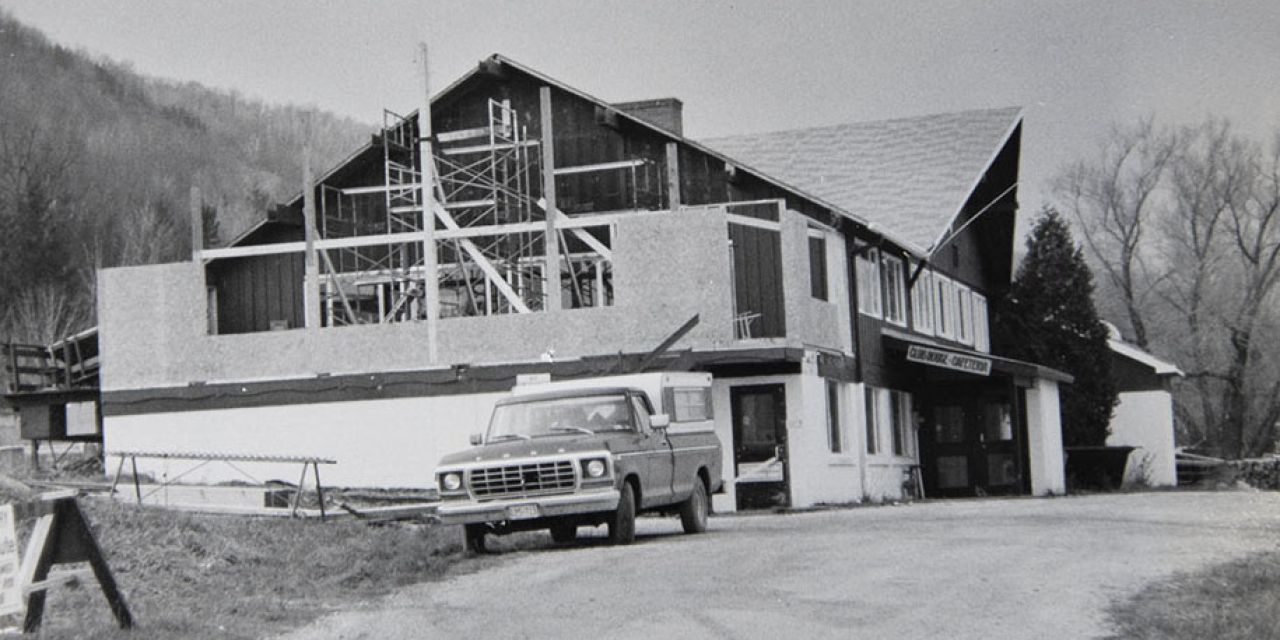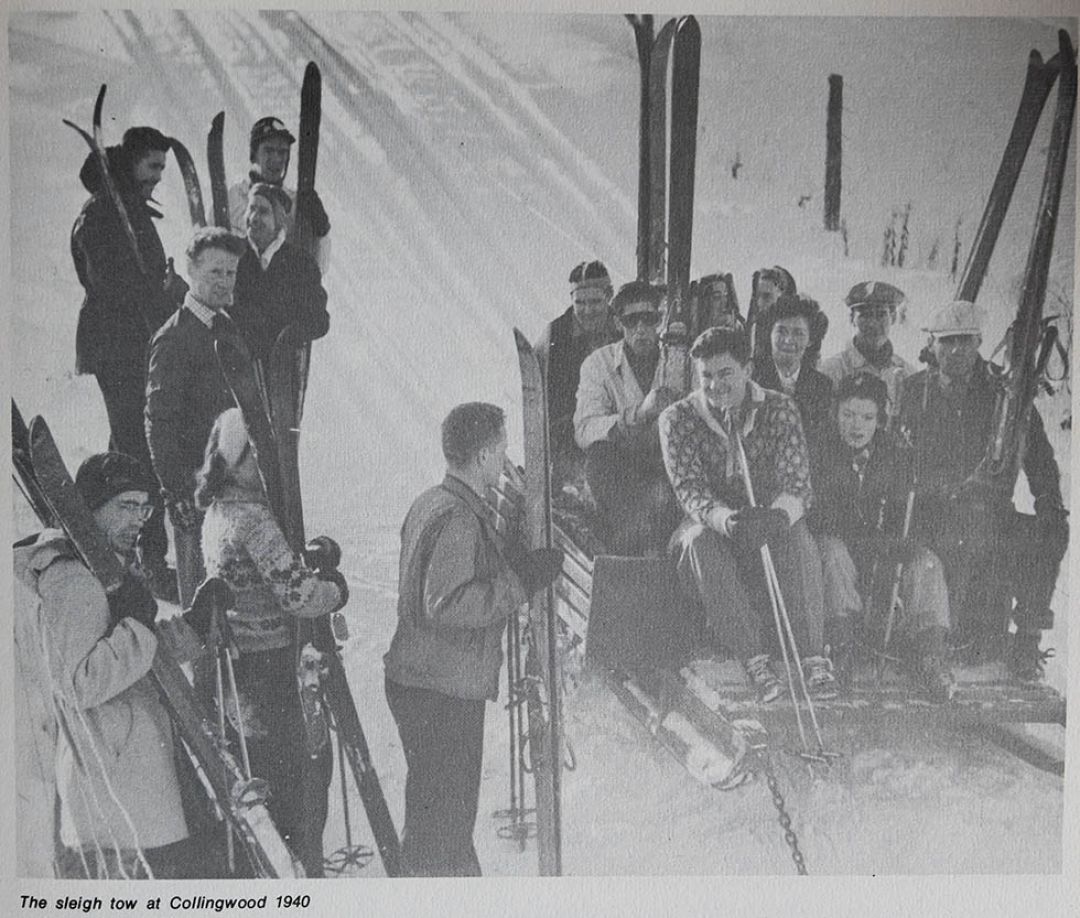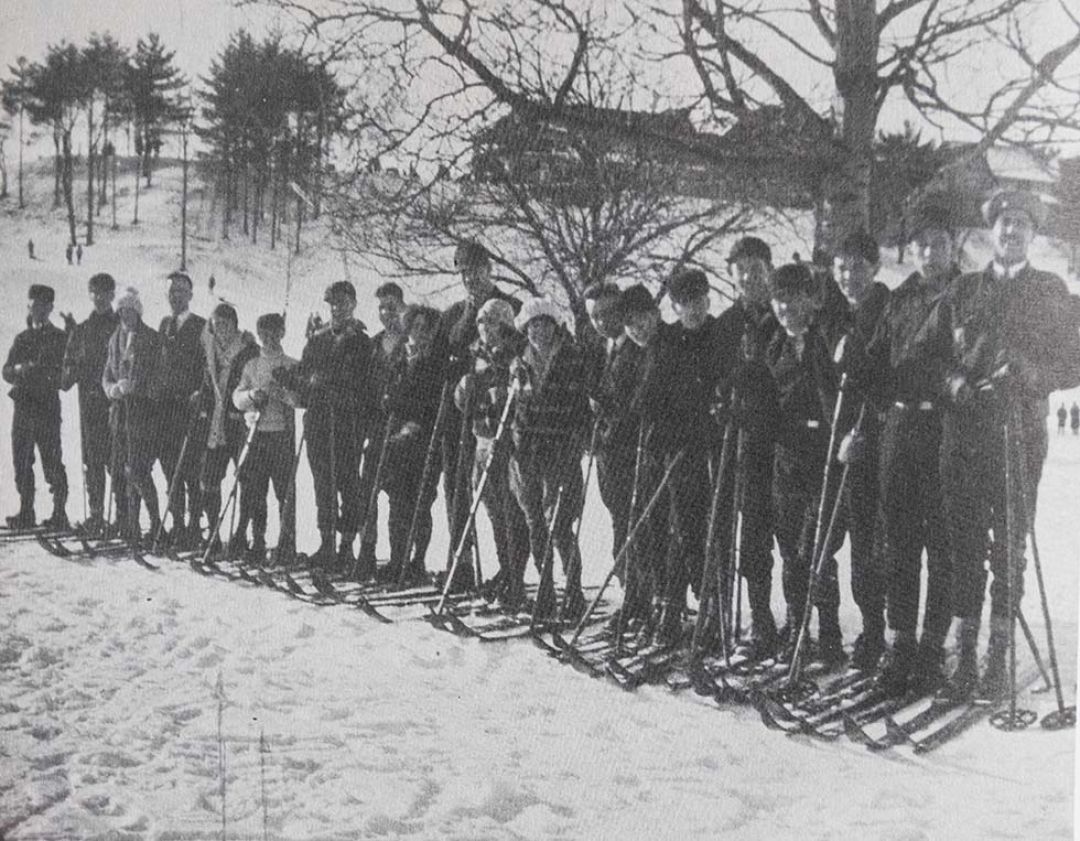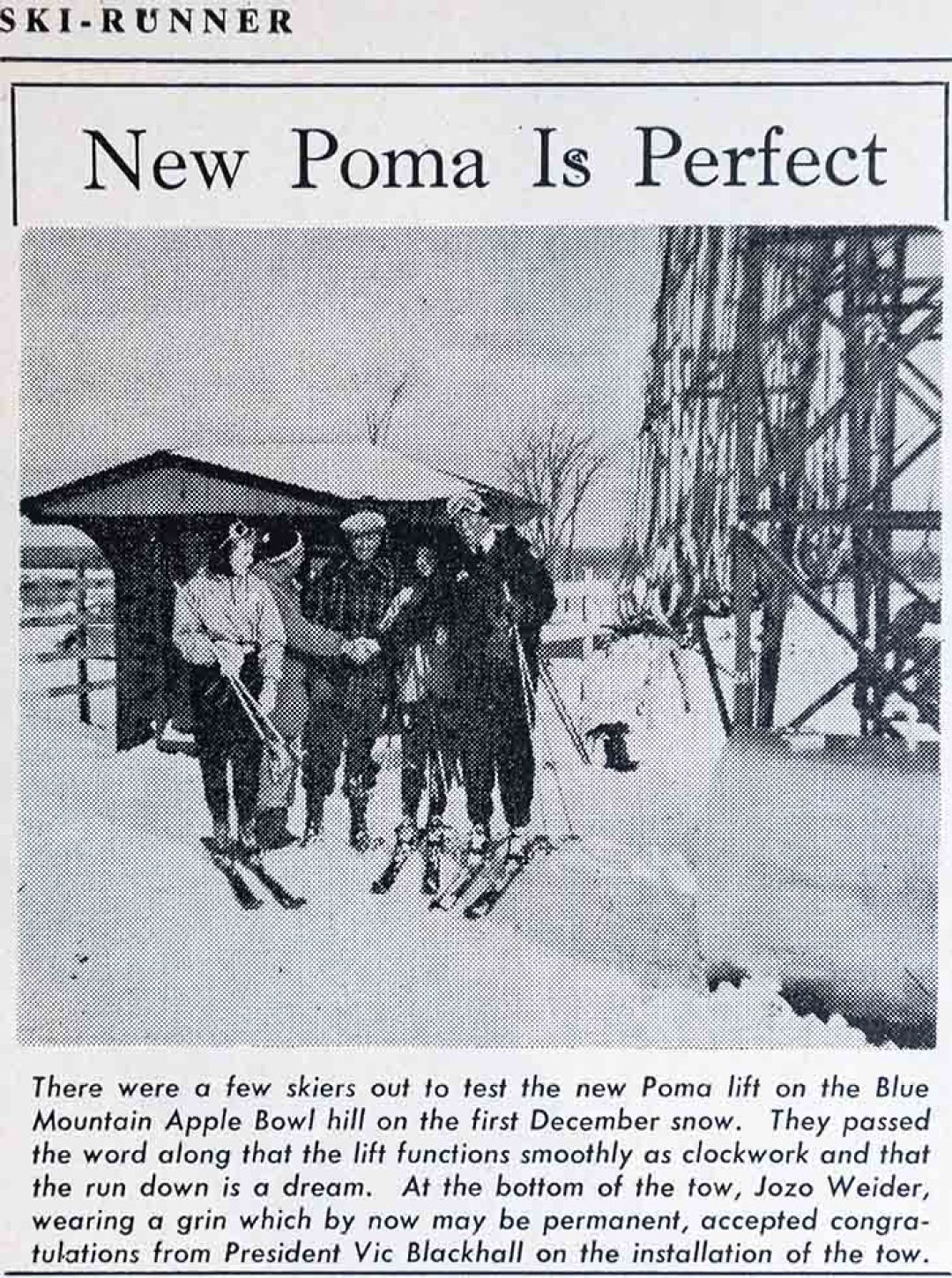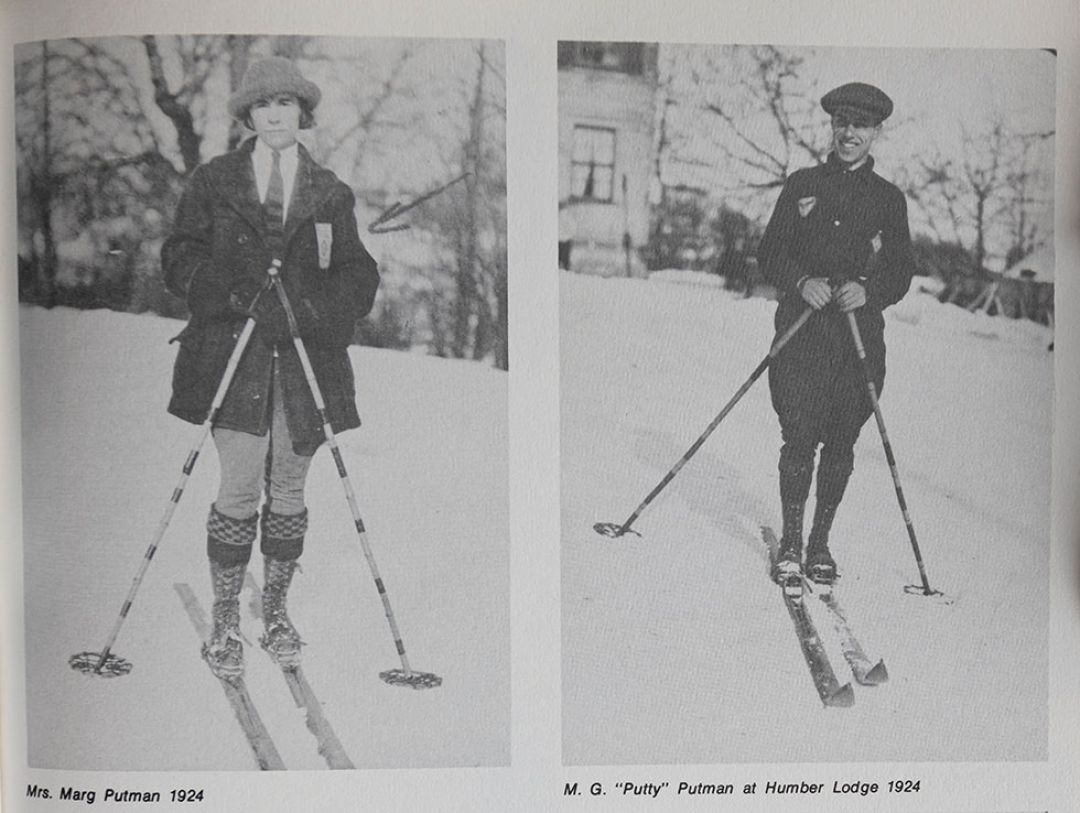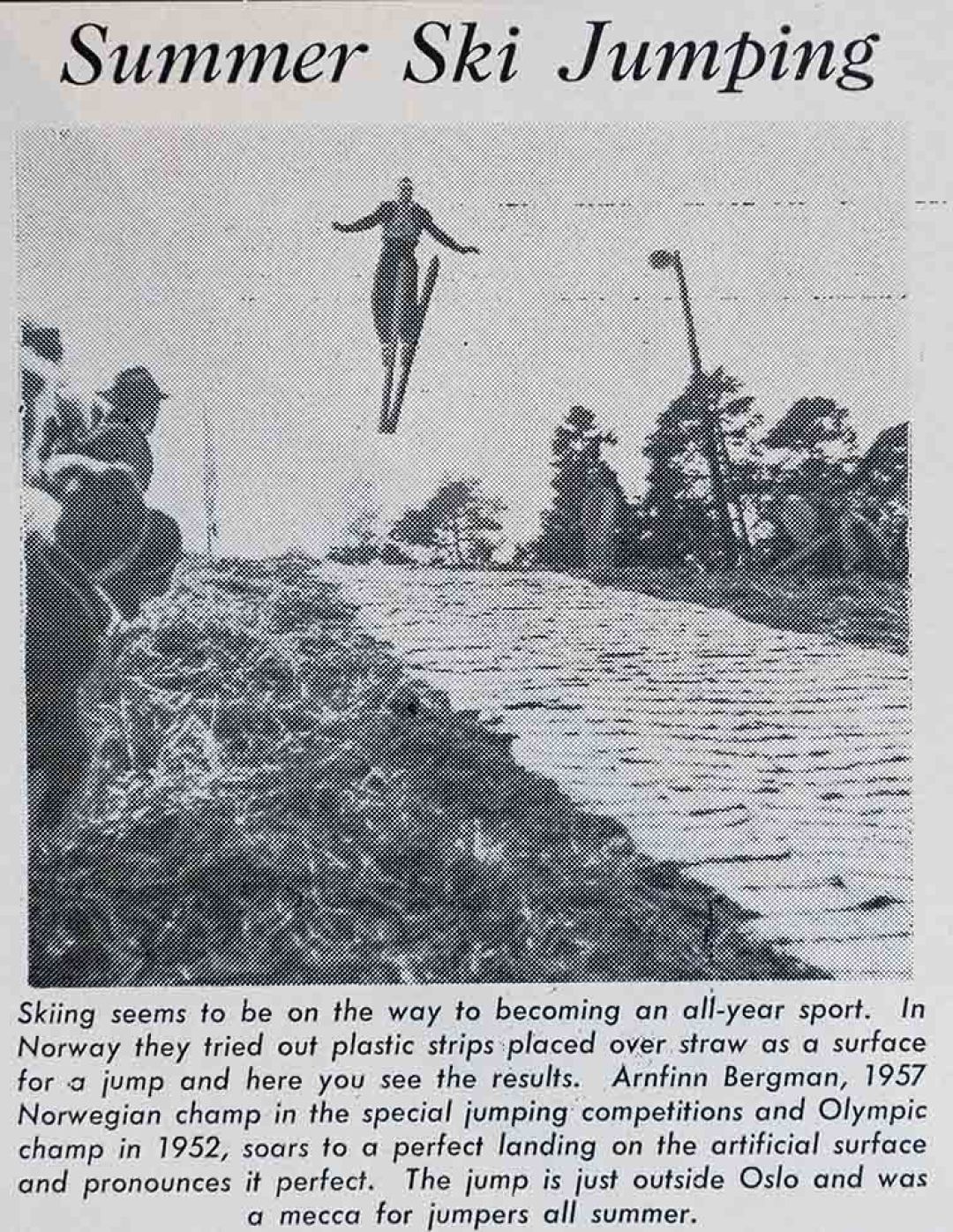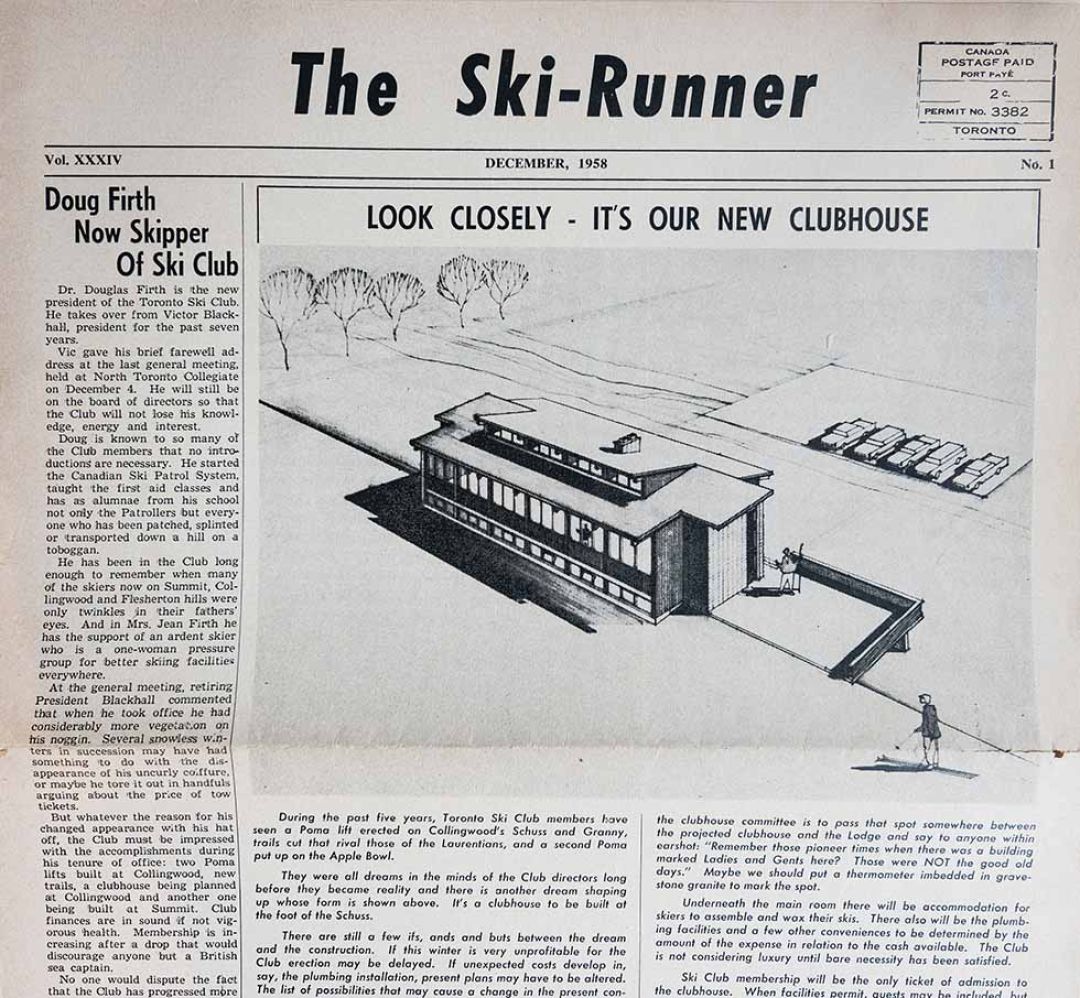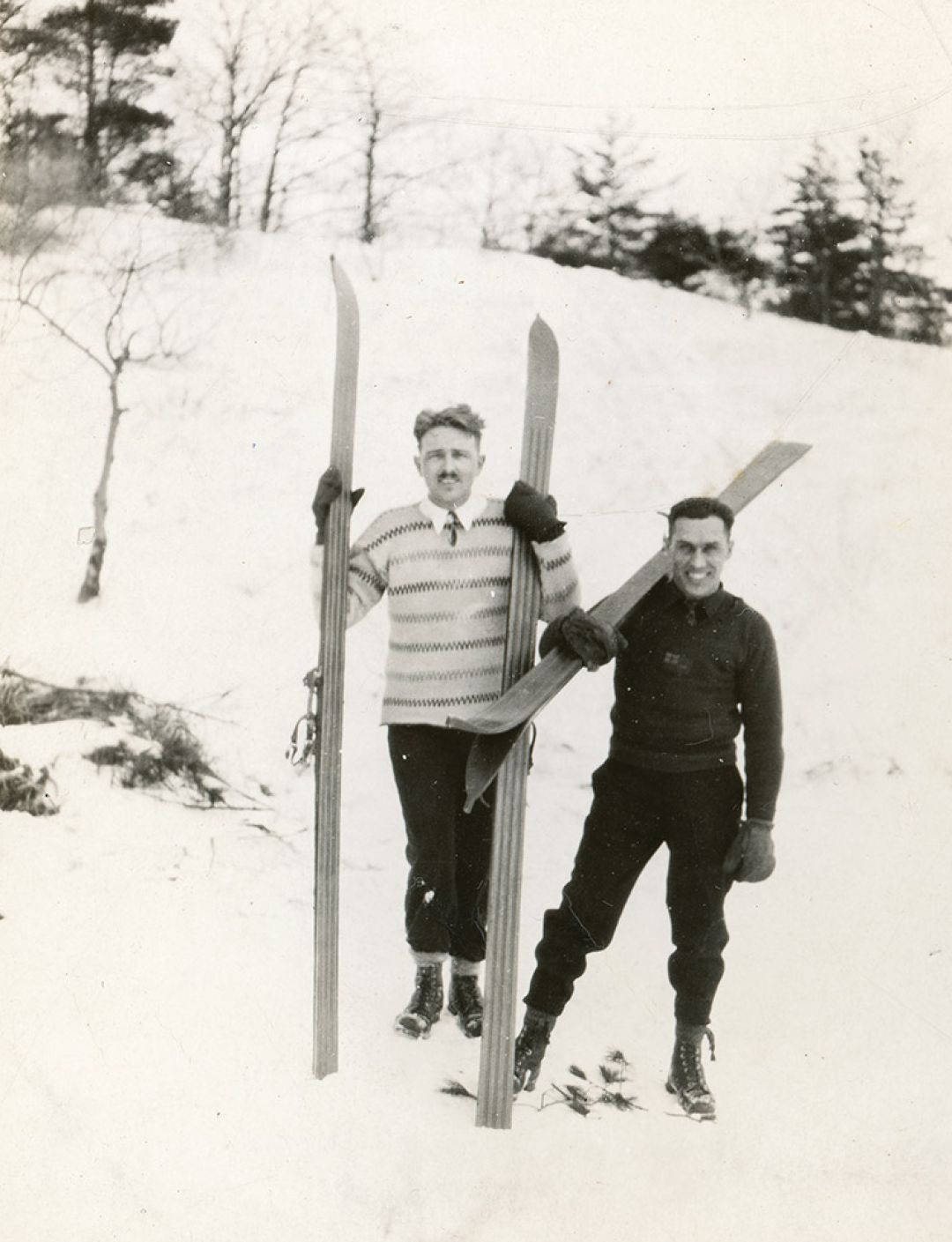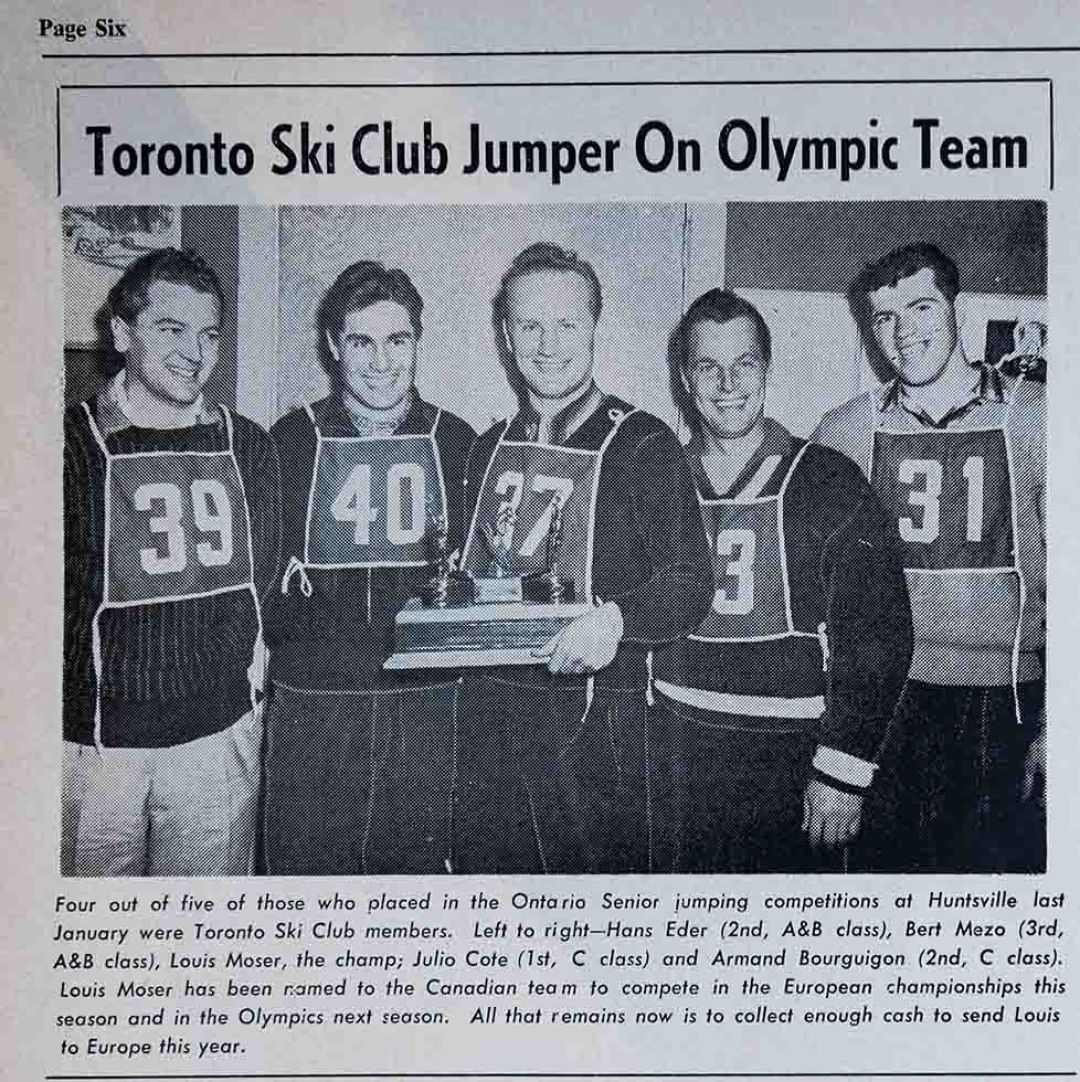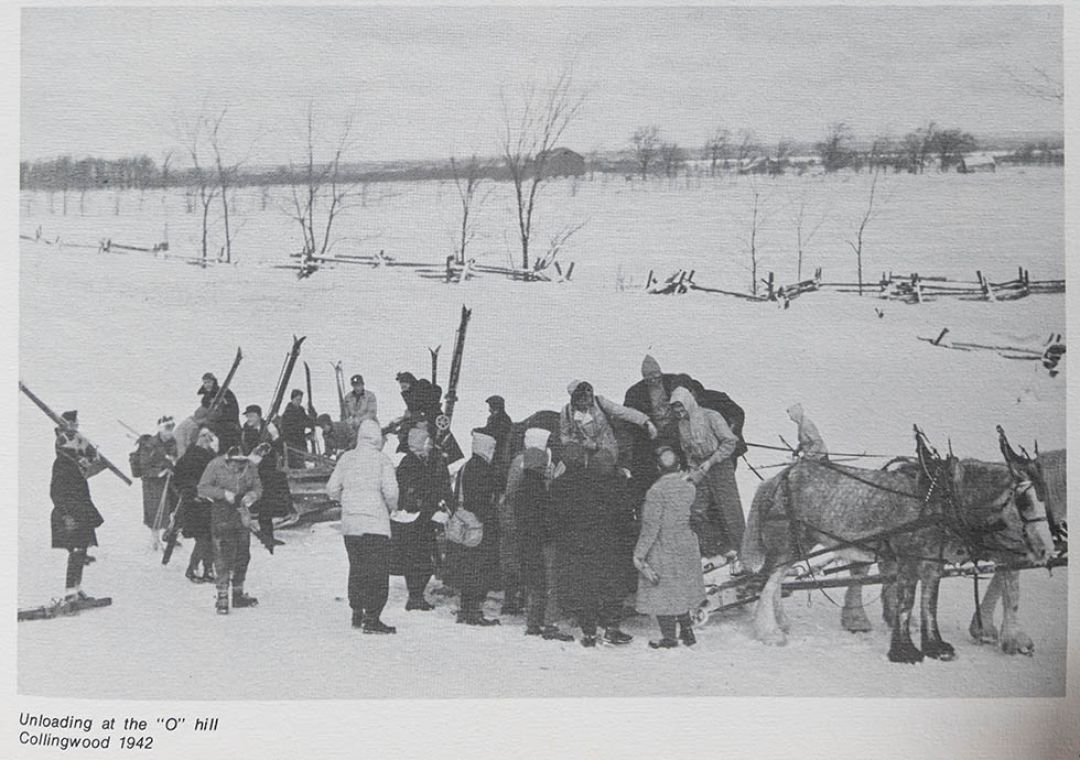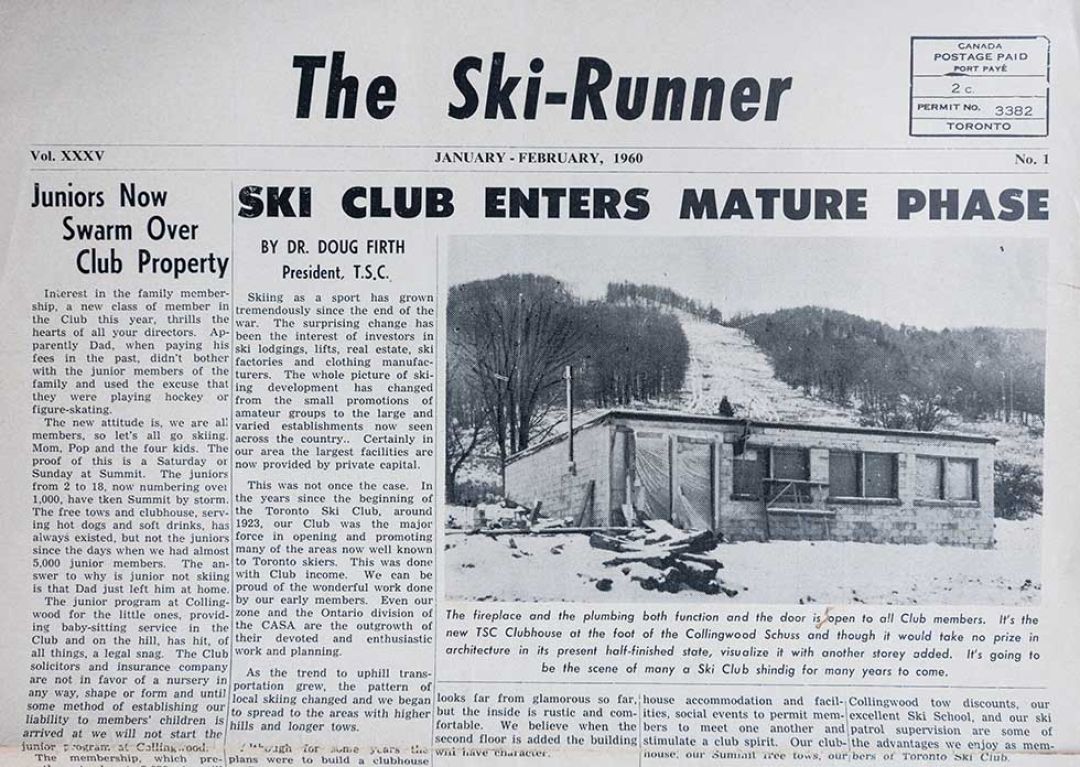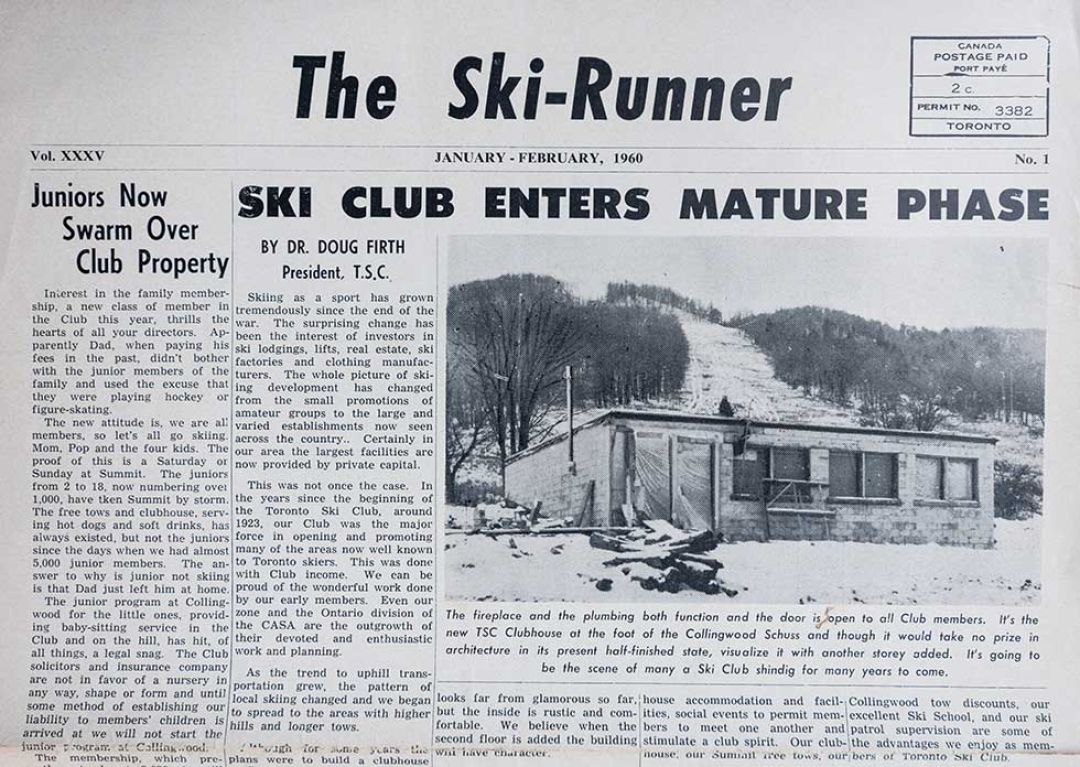Turns of the Century
by Kate MacLennan | photos courtesy of the Toronto Ski Club
As the Toronto Ski Club turns 100, we take a schuss down memory lane.
It’s a chilly January Saturday night in the Blue Mountains. As the sun, still weak in the depth of winter, sinks behind the Escarpment, the temperature drops with it. A welcome cold front is making its presence known. Beside Toronto Ski Club’s clubhouse, children have doffed skis and snowboards to play on the hill, running up and sliding down beside the old rope tow, which has stopped turning for the day. Inside, a band takes to the stage and the atmosphere goes from post-ski endorphin-rushed to revelry. Outside, to everyone’s delight, the white stuff falls, and falls, and falls. It’s a scene that could have happened last year or 90 years ago—and did. Toronto Ski Club (TSC) celebrates 100 years in 2024, so the notion of ‘the good ole days’ is relative.
Jaxson Lashambe has been a member of TSC since he was two years old, and he’s been racing since his U8 days. “I grew up on the hill, and when you do you know every little trail and recognize people when you go past them. I have lots of good friends there. It’s a big community and it’s awesome. We have this little tow rope beside our hill. It’s literally 20-feet long, not even as slanted as the floor in your house, but when we were little we’d ask the maintenance guy for shovels and build these little ramps on it. Even when it wasn’t running, we’d go up to hit these two-foot or three-foot jumps and have so much fun.”
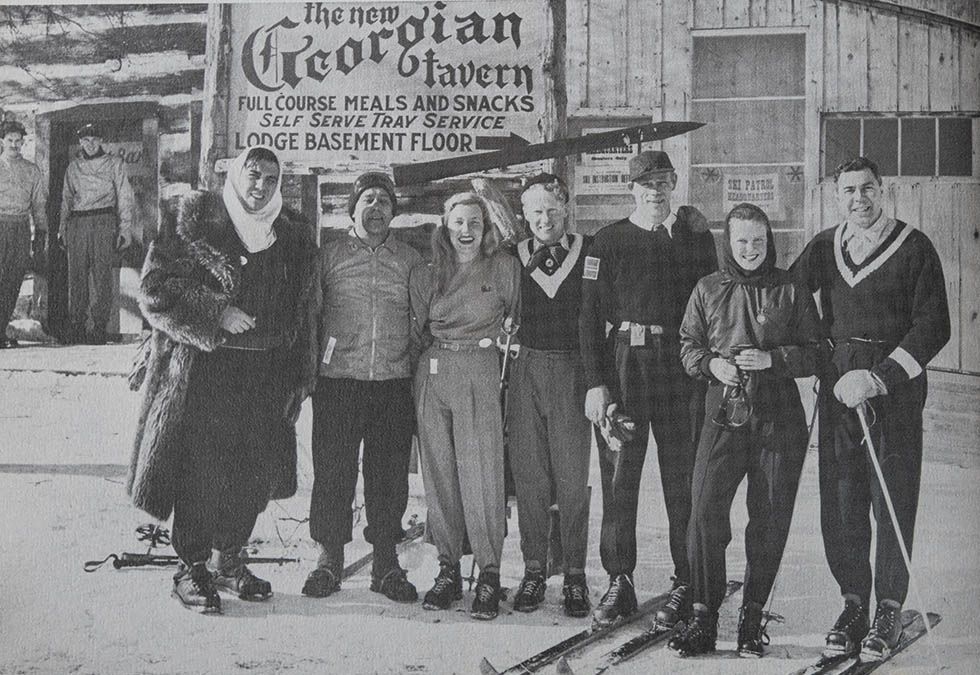
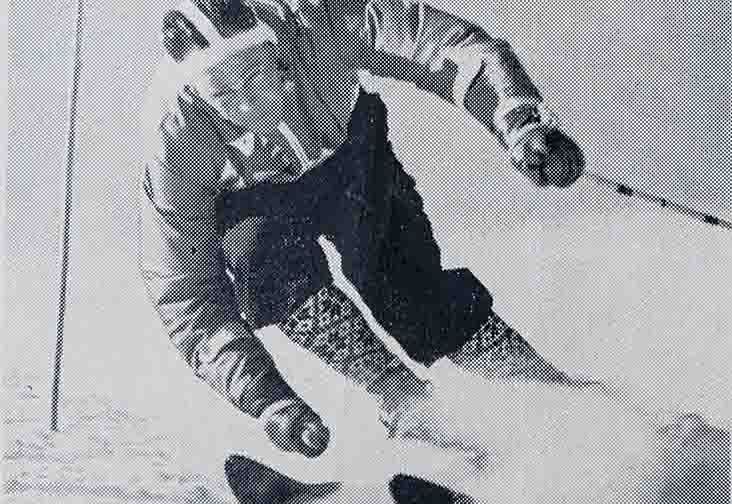
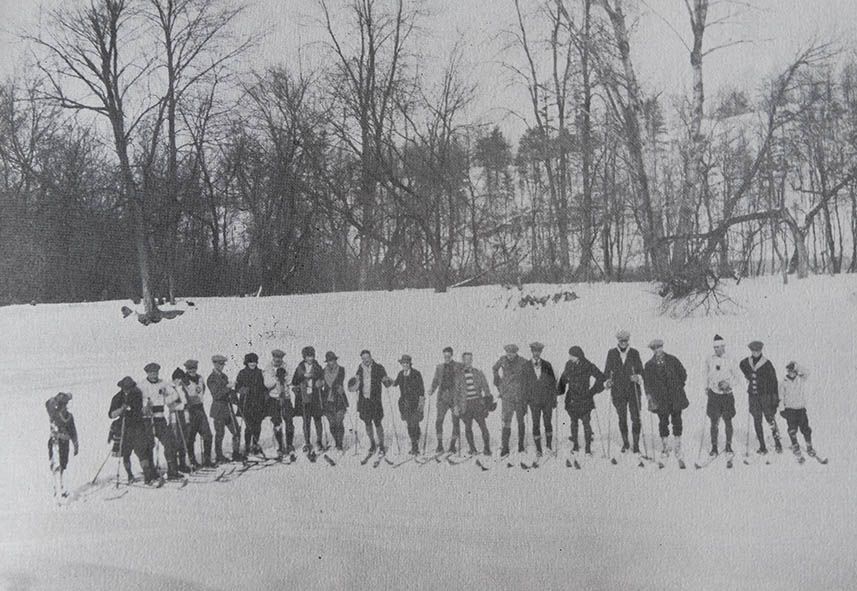
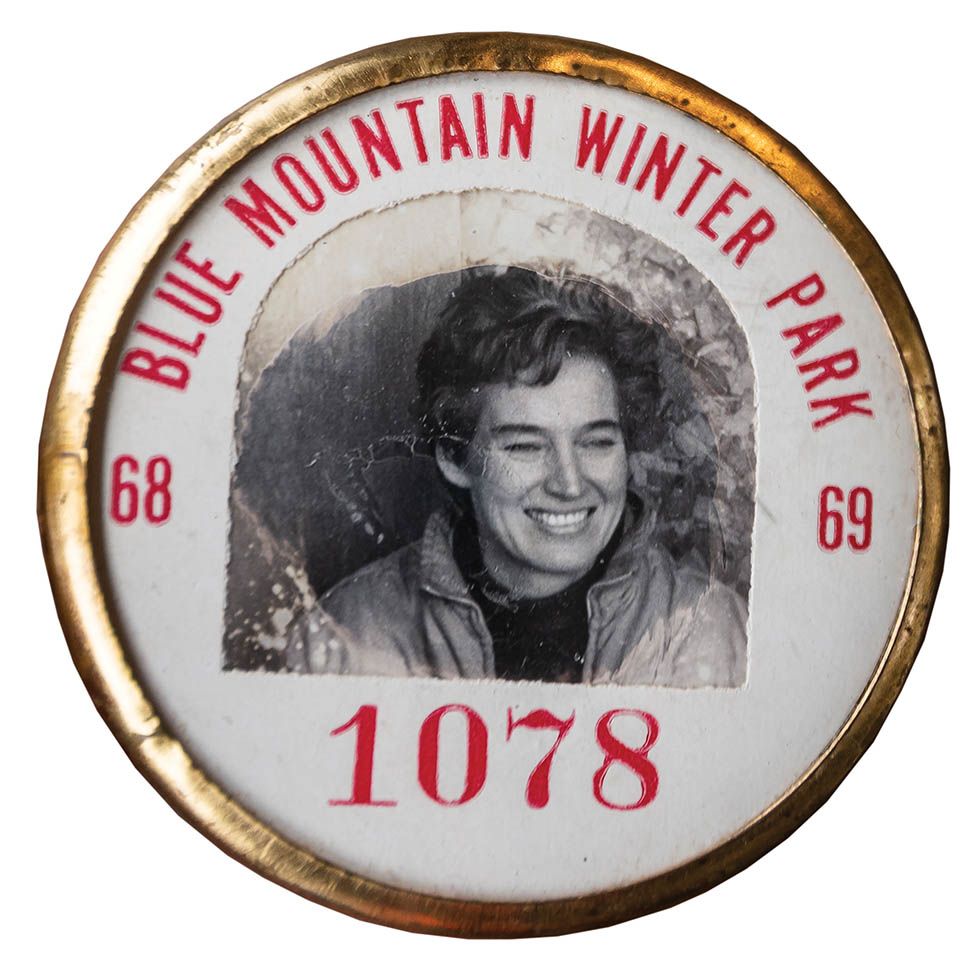
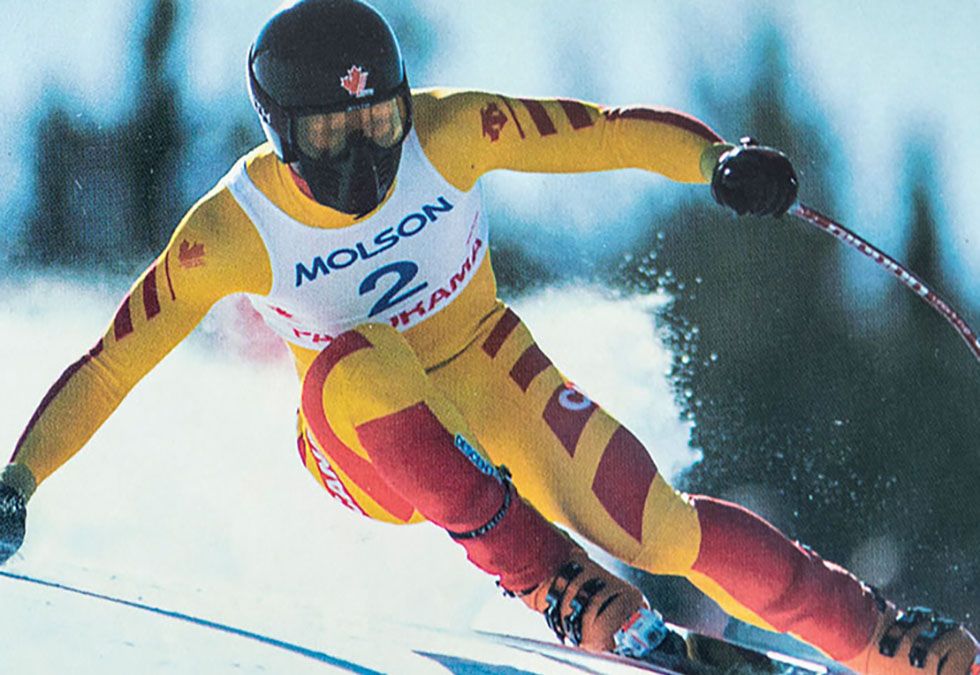
Clockwise from top left: the Doherty House Tavern circa 1945, TSC members at High Park 1924-25, Todd Brooker at Panorama, a 1968-69 Blue Mountain Winter Park Season Pass belonging to Marg Gooch, and Bill Beck at Blue Mountain.
On the day we speak, Lashambe is a few weeks shy of his 13th birthday, which puts him at 12—the same age John Hethrington was in 1948 when he became a TSC member. He recounted to Escarpment Magazine in the Winter 2017 issue, “I remember two rope tows at the north end. You leapt off one, two-thirds of the way up the hill and grabbed onto the second moving tow. In the spring, when the rope was so slippery our mitts would slide, five of us at a time would hang on, and when they started up the tow we would be showered with water and slush if we let it slip. I can just imagine what the safety people would say today.”
Lots has changed in the world since TSC since was incorporated in 1924, but its centennial is truly a celebration of what hasn’t: skiing and camaraderie. “We’re sometimes called a social Club that loves to ski,” says Mike King, co-chair of the 100th Anniversary Committee and a member of TSC since 1980. “It’s people passionate about living and enjoying winter and some are skiers, and some are not as much about the sport itself.”
It’s a chicken-or-egg conversation as to why TSC began, but it doesn’t really matter if it was great friends who decided to ski together or skiers who were brought together by the sport and became great friends. What matters is that in 1908 (according to a 1912 Montreal publication called Ski Runner in Canada) the first seeds of what would become the Toronto Ski Club were planted. During this time, Toronto’s population was less than a quarter million, the primary method of travel was still horse-and-carriage, and the Club would cut trails in Toronto’s High Park, and utilize the Reedow Pavilion as both clubhouse and locker room. If members could ski as far as The Old Mill on a given day, that’s where they’d lunch, and by 1924 that group had attracted 84 official members (about one-third of whom were women) and were identifying as the Telemark Ski Club. New members paid an initiation fee, an annual fee of $1, and received the Club crest—a single pole and crossed skis on an orange background, with a black shield with diagonal TSC letters—for free.

Helen Laidlaw, Gwen White, and “King” the husky
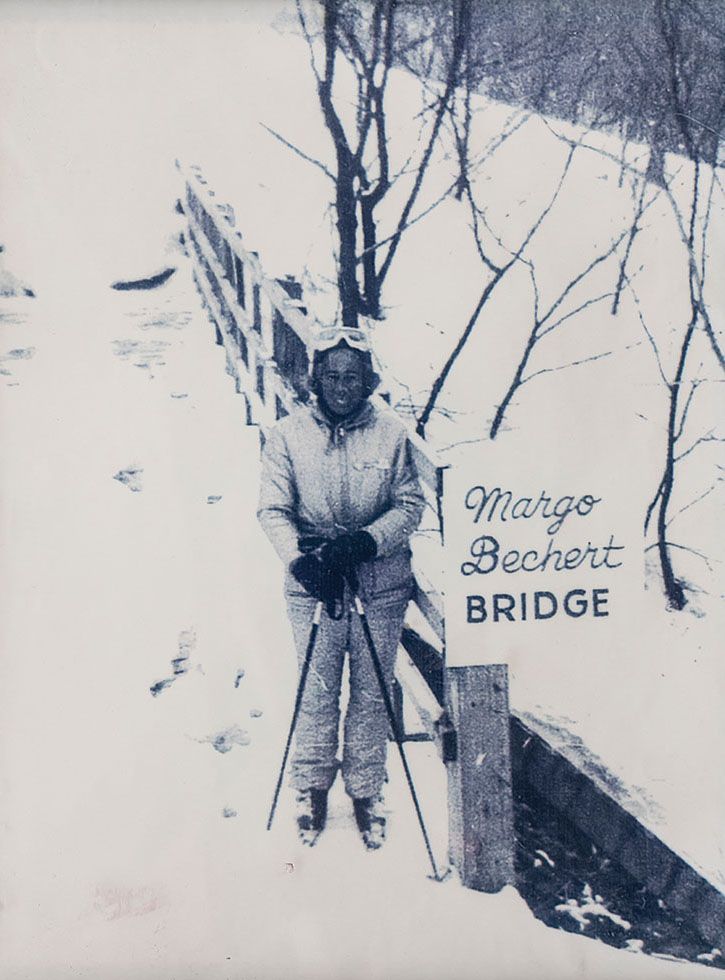
The Margo Bechert bridge that connects to Kandahar run
The Club took skiing seriously. It presented small bronze medals to those who passed what was deemed a “first-class test”, its requirements as follows:
1. Correct and steady darting position.
2. Most efficient method of climbing on two different hills.
3. Kick-turn, right and left, on level and slope.
4. Right and left stemming.
5. Snow-plow.
6. Alpine S-turn.
7. Side-slipping.
8. Lifted stem.
Early records show the Club was equally dedicated to its social element. This, from the January 14, 1924, meeting minutes: The question of having a regular Club Night on a definite night each week when members coming out can be assured of meeting others was discussed. Moved by Mr. Cliff, seconded by Mr. Binch, that Wednesday night be known as Ladies Night when weather permitting all skiers will try to get out. For the present the rendezvous by the Reedow Pavilion, High Park Boulevard Entrance, and the time 8:30 PM.
During the same meeting, the question of changing the name “Telemark Ski Club” was raised. Also, from the minutes of January 14, 1924: It was felt that Toronto Ski Club would be a better name, and if the change was not made at once some other Club might start up under this name.
The Club’s 24 board members passed a majority vote to be called the Toronto Ski Club. The aforementioned Mr. Binch was assigned to ascertain the steps required to register the name, and the meeting moved on to make plans and arrangements for Ladies Night.
Anna Potvin has been a TSC member since 1980. “My oldest, longest friendships are from there. There’s a photo of a few of us on the chairlift a couple years ago that I posted on social and said, ‘Friends that ski together, stay together.’ And I think that’s true of friends you have a lot in common with,” she says.

TSC members enjoying a picnic at the top of V-Hill, April 1950. Left to right: Marg Gooch, Katie Forsyth, Bert Myers, Lee Jones, Chuck Gooch, Frank Whitehead, and Fred Gooch.
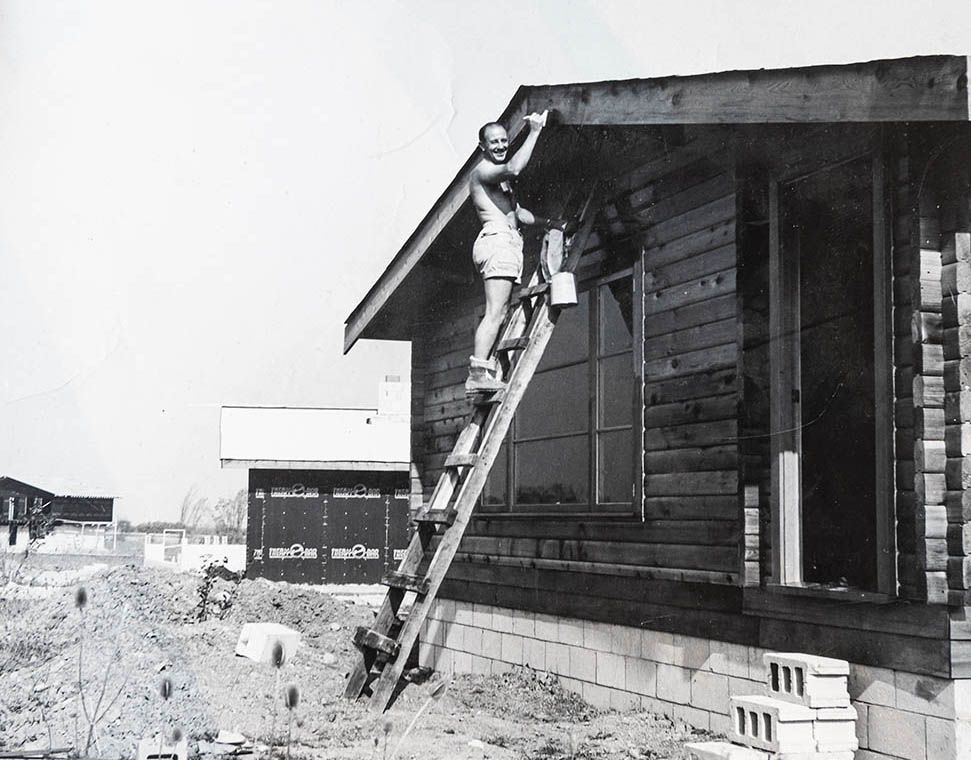
Jozo Weider
Her experience with TSC began when she was six years old and her stepfather introduced her to skiing. “We lived in Cambridge, and I just remember those car rides up every Friday. We always seemed to be travelling in the worst weather, getting into little car accidents, and next thing you know we’d be spending the night in Shelburne because the roads were closed. Everything felt a bit more reckless back then, but we’d be coming up because I ski raced. So, Fridays we’d go to the chalet, turn on the heat, then head straight to the TSC for dinner. You’d see your ski coach and friends there and it started the weekend off the minute you got to the Club. It always felt like a home away from home.”
Per King, TSC is the second oldest ski club in Canada—older than the Canadian Ski Instructors Alliance itself. In 1926 TSC created its own publication, The Weekly Trumpet, renamed The Ski-Runner in 1927, which by mid-century was one of the most successful ski publications in Canada. The same year, TSC made its new home at Summit Golf Club in Richmond Hill where it secured a lease for wintertime use of the property that lasted 47 years until the 1974. It 1930 it also expanded its interests into Caledon, leasing farmland and purchasing a small property to establish a second clubhouse until the second World War.
Come 1931 the Club numbered 2000 members, and by 1934 it was the largest ski club in Canada. It was also the first to host competitions. Members built the 150-foot Thorncliffe Ski Jump and practice jump where the Ontario Championships took place on February 10, 1934. (Downhill and cross-country events were held at the Caledon property.) By 1938, 3000 members were donning the Club’s uniform of a navy-blue cap, skirt and long, pleated trousers.
The Club’s initial investment in the Blue Mountains was in 1934, when it partnered with some Collingwood residents to purchase a farm property at the north end of Blue Mountain for $3,200. By the 1940s, unable to secure a long-term lease agreement in Caledon, the club set its sights firmly on the Escarpment further north, spending an additional $3,200 to purchase a farm property at the south end of what is now Blue Mountain, and which includes the O Hill.
It was when the TSC, Collingwood Ski Club and Jozo Weider put their heads together that the foundation for today’s TSC and Blue Mountain Resort was truly laid. Weider had been purchasing farms along the Escarpment to create his vision for what would become Blue Mountain Resort, and in 1945 TSC loaned him the funds to purchase and install the first real ski tow, a poma lift, located on the north end of Blue Mountain. Two years later, the Club loaned Weider an additional $3,000 to help develop Blue Mountain and, most critically, leased its Blue Mountain real estate interests to Weider for a term of 999 years, agreeing to cash, shares and special considerations in return for the lease.
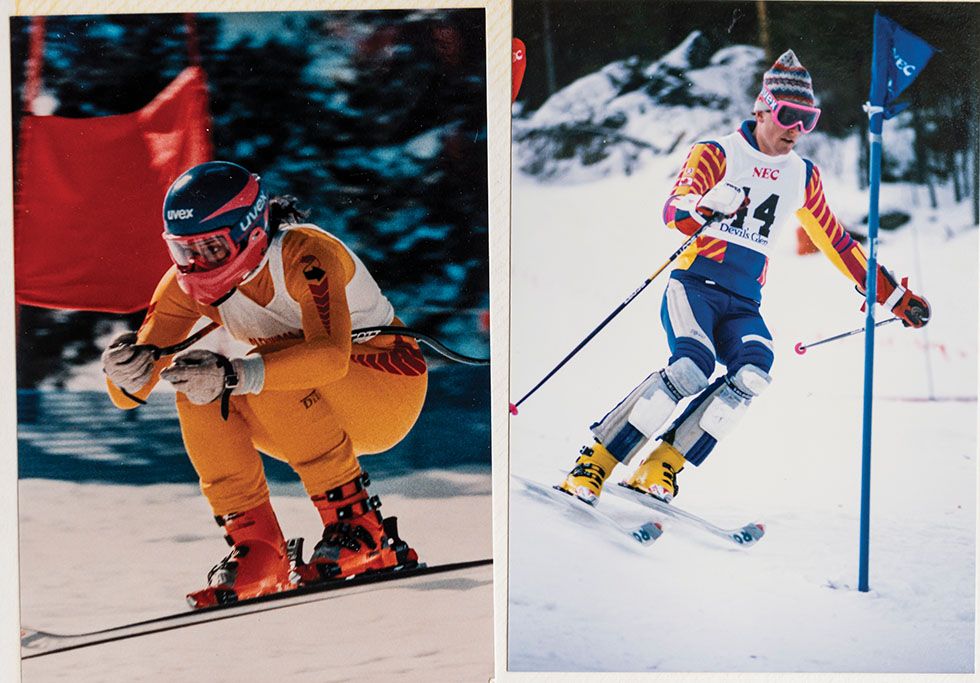
Left to right; racers Kerri Lyn Houde, 1986 and Brad King, 1987
“We have a really unique relationship with Blue Mountain Resort,” explains TSC Past President Graydon Oldfield, a Canadian Ski Team alumni and TSC member since 1973. “Toronto Ski Club and Collingwood Ski Club in essence owned a ton of the Blue Mountain property but merged their properties with Jozo’s in a 999-year lease to create Blue Mountain Resort. Blue Mountain has the rights to the operation side, and TSC gets access to much more property than it could have otherwise. TSC is tucked away in the north of Blue Mountain so it’s pretty untouched by the rest of the public, but if you want that action, you can get it. We have the most skiable terrain of all the Escarpment Clubs but a small club culture, and it all flows into this incredible public environment of Blue Mountain Village, which is exceptional from my point of view.”
Issues that plague other clubs don’t bother TSC members, King says. “Public clubs are often trying to scrounge for cash to pay for a new chairlift or snow guns et cetera, but we’re guaranteed the best from a facilities perspective. Blue has the best technology and infrastructure and resources. It’s a world class mountain.”
Add to that TSC’s highly regarded ski racing program (Todd Brooker is one of its well-known alumni). “Our programs are smaller but powerful and I think that’s why they attract some of the best coaches on the Escarpment—there’s more attention to the athletes,” says Oldfield.
The TSC, it should be becoming clear, runs like a well-oiled chairlift. The business of skiing is as key to its success as the joy of skiing, and as such it’s widely credited with growing skiing throughout Southern Ontario. In 1936 it leased a property in Uxbridge and created Dagmar Ski Resort, investing in the property until 1963. In 1949 it helped to found Beaver Valley Ski Club, loaning it money in return for stock. The Club invested in and sold—at a profit—a 50 per cent share in Hockley Valley near Orangeville. It invested in Edelweiss Park in Bolton. TSC members have spun off to create Osler Bluffs Ski Club, Georgian Peaks Ski Club and Craigleith Ski Club, which TSC sold seven acres to in 1991 in order for them to properly develop their V-Hill runs. Evolution continues to be one of TSC’s most admirable qualities. Its board now has a permanent position focused on diversity and inclusion, for example, and the Club warmly welcomed the arrival of the IKON pass, which TSC members must hold to ski on home turf and gives them instant access to world-class resorts around the globe. Nostalgia, though, will always have its place.
“I’ve still got my first TSC pass. It has a fluorescent dot on it, which meant I could night ski. It has the old logo and there’s zero tech. I always wear that pass on retro ski days,” Potvin says. Events like retro ski day are what TSC is arguably most famous for.
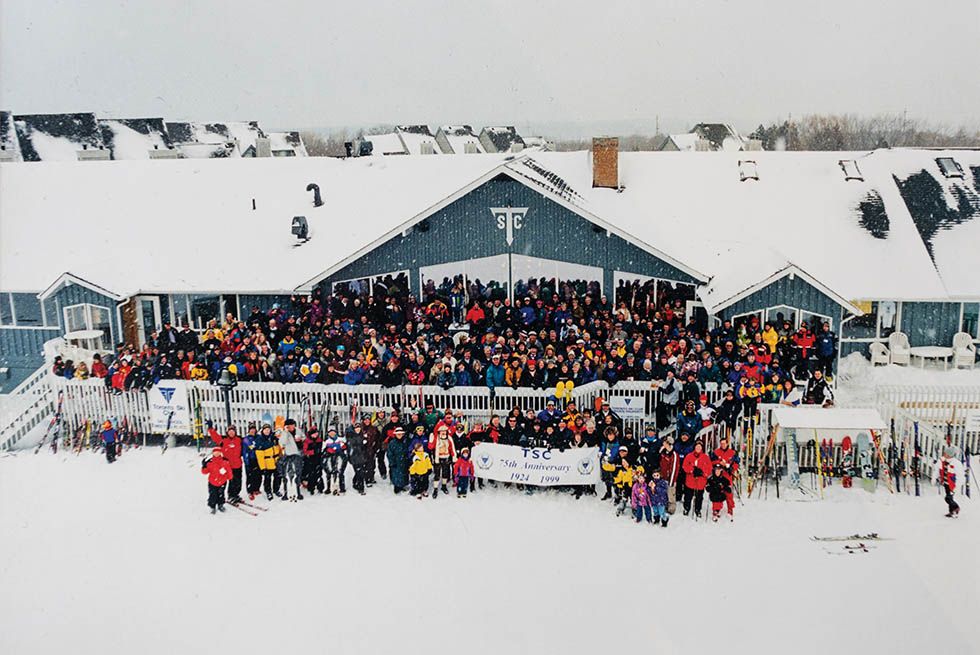
TSC’s 75th Anniversary, “1924 Day” March 6, 1999
“Even more than other clubs, we’re known for the social thing in that we’re a really small club and throw the best parties,” says King. “Our mens’ and ladies’ days are really well attended, we have après bands every Saturday and about five big parties a year.”
Oldfield credits strong event attendance to the feeling of community. “The fact your kids are known and welcome and safe is extremely important. Every Saturday we have a kids’ program, like face painting or laser tag or animals from the zoo. The culture here is extremely important. I think what we’re really proud of at TSC is you can just be who you want to be. You don’t have to keep up with the Joneses. It’s more like walking into Cheers and everybody knows your name,” he says.
Comedy—or at least good-natured fun—is also core to TSC. Potvin says, “I can’t hear Joan Jett’s I Love Rock ‘n’ Roll without thinking of March Breaks when I was a kid at TSC. There would be men wearing banana hammocks skiing around, and I was thinking, ‘Wow, this is crazy.’”
Oldfield recalls a now-defunct annual event called The Horse’s Ass. “It was a massive costume party led by my mom and dad and their friends. We’d march down the highway and into the Club and do obstacle courses and events on the side of the hill. It was ridiculous and something I don’t think you’d get away with anymore.”
Perhaps not, because most things do change, though at the Toronto Ski Club the joy of skiing, friendship, and winter in Ontario don’t number among them. E

